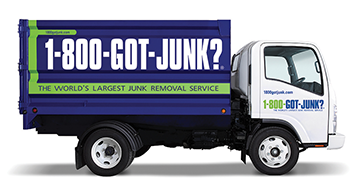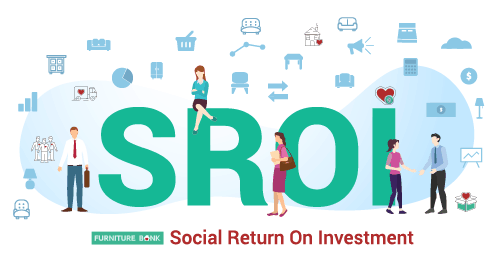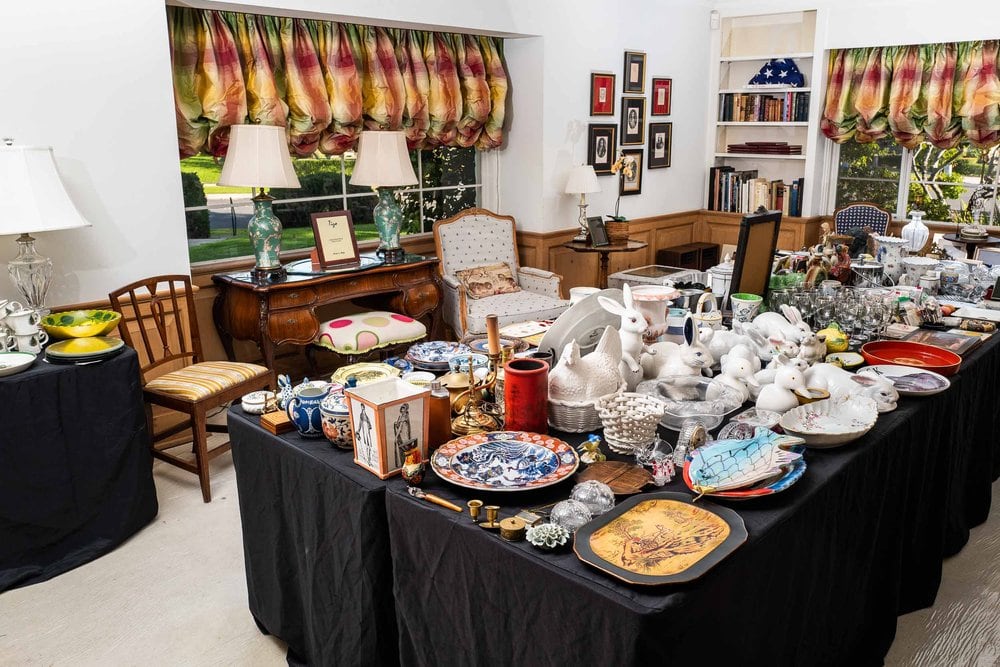Furniture Bank Toronto (FB) is always seeking creative and cost-effective ways to help more client families access the furniture they need to create secure home environments.
We have worked with a number of corporate partners over the years who support our mission and share our environmental ethos.
The following is a ‘proof of concept’ project we ran with the Toronto franchise of 1-800-GOT-JUNK? to test a model of diverting usable furniture from landfill.
Overview
Paul Guy, the original owner of the Toronto 1-800-GOT-JUNK? franchise has been a supporter of FB since 2014. His trucks, whose routes brought them to the vicinity of our warehouse, would periodically stop at the Furniture Bank to drop off any reusable pieces of furniture. This was furniture from clients who had hired them to remove their ‘junk’.
In 2018, we ran a pilot project to test whether we could create a consistent, scalable process of separating and capturing usable furniture from the flow of discarded furniture handed to the paid removal service providers. We wanted to investigate the role a commercial removal company could play in being a source of incremental furnishings to our inventory.
During the five-month trial, we focused on five (out of 17) 1-800-GOT-JUNK? truck teams across GTA. These teams were most familiar with FB and the sort of furniture that we could use for redistribution.
The “Diversion with Purpose” Pilot
To mitigate the loss of income or opportunity to the 1-800-GOT-JUNK? teams, we recognized the need to minimize diverting trucks from their routes between customers and the transfer stations. Through their relationship with Access Storage, 1-800-GOT-JUNK? arranged for the placement of six 640 cubic ft storage bins near the private transfer stations used by 1-800-GOT-JUNK?.
FB also provided training and materials to the truck crews participating in the project which outlined: quality control; how to spot contaminated items; and, detailed the list of items that were (and were not) acceptable for redistribution to Furniture Bank clients. 
During the pilot, 1-800-GOT-JUNK? teams moved diverted furniture from the transfer stations to Furniture Bank – and did so on a voluntary basis, without additional fees charged to Furniture Bank or the customer.
Paul Guy also authorized the use of trucks from his moving business, You Move Me, to support transfers so that they did not interfere with paid truck runs.
Results
The five-month pilot with the five participating 1-800-GOT-JUNK? trucking teams yielded the following:
- Pieces of furniture collected: 2,395
- Customer ‘donors’: 190
- Donation Receipt Value of furniture: $264,000
- Number of families supported: 160
- Average number of jobs each month with drop-offs at Furniture Bank: 25
- Average number of items collected per job: 11
- Average “usability rate” of diverted furniture (after breakage): 75%
- After mid- pilot training, usability rate rose to 85%
- Cubic meters of furniture collected (uncompacted): 1,100 m3
- Equivalent to 60 full storage lockers
Lessons Learned
There is an exciting opportunity for Furniture Bank Toronto – and other furniture banks across the country – to work with the removal industry to increase both the volume of usable furniture available to the organization and the families it supports and the amount of ‘waste’ diverted from landfill.
Our trial with 1-800-Got-Junk? was voluntary, and it also placed the cost burden of the removal and transfer entirely on our partner.
The project highlighted the need for training and training materials to be integrated into the operational process in order to maximize diversion.
In order for Furniture Bank to meet the need of the 20,000+ requests for furniture it receives every year, the organization needs to expand its funding model beyond its own furniture removal service – which is run as a social enterprise. It also needs to find new, cost-effective ways to increase its inventory of usable furniture. If FB is a competitor to removal companies, it makes it more difficult to collaborate and maximize the diversion flow.
The shared values of Paul Guy and his team were a key factor in the success of the pilot. We appreciated their commitment and want to investigate ways to minimize the cost burden to our partners.
Next Steps?
If we extrapolate the model to all 17 residential 1-800-GOT-JUNK? trucks, the potential number of items diverted from landfill and made available to families in need could be as high as 60,000. Given the social need – and the environmental impact – the case for exploring this partnership opportunity further is compelling.
We have joined forces with Furniture Link Inc., and its CEO, Annalee Sawiak, to pursue new, financially sustainable models for increasing waste diversion through collaboration and in support of a critical social purpose.
From a small pilot in Toronto, we look forward to larger pilots that demonstrate how the existing transportation companies can play integral roles in both social and environmental outcomes in the communities they operate in.
Deeply appreciative of Paul and Ashton for collaborating with us for 6 years now in trying to arrive at a sustainable model in getting good reusable furniture into the hands of the families Furniture Bank supports.





